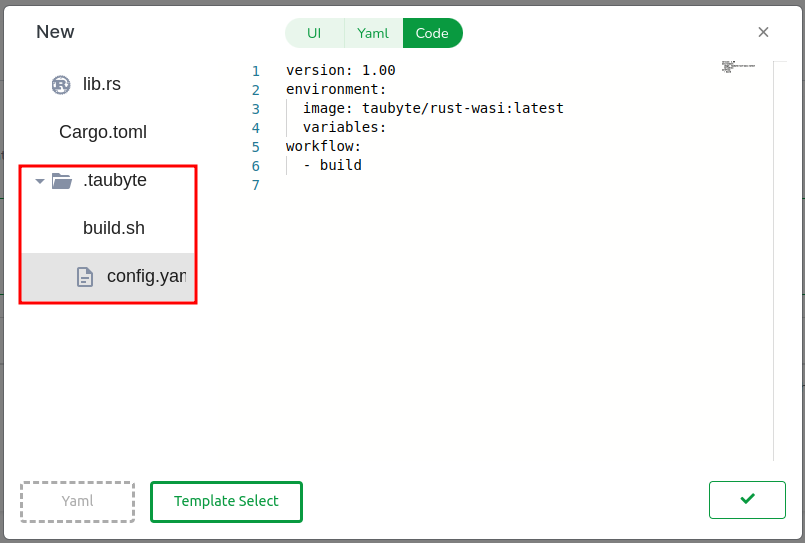CI/CD
Taubyte has a built-in CI/CD system. Push events to the branch (see work with branches) that the nodes are running on will trigger a build. The build process is defined in the .taubyte folder at the root of the codebase.
If you take a look at the code of any serverless function or website you'll find a .taubyte folder. See the examples below:
Go Function¶

Rust Function¶

Website¶

The .taubyte folder¶
The .taubyte contains the configuration and any assets needed for the build process. In the examples shown above, it contains:
config.yaml: Defines the build workflow.build.sh: Is a script executed by the build workflow.
config.yaml¶
The config.yaml file is used to define the build workflow and has a quite simple syntax:
enviroment: defines the environment variables and the docker image to use.workflow: defines the steps to execute. Each step is a shell script to execute.
Example:
version: 1.0
enviroment:
image: node:16.18.0-alpine
variables:
- ENV: production
- PUBSUB_TOPIC: "transactions"
workflow:
- generate
- test
- build
Artifacts¶
We've designed our CI/CD system to rely on conventions instead of complex configurations. If all the workflow steps excutes successfully, the /out folder will be archived and compressed and will be the published asset.
Serverless Functions¶
For serverless functions, Taubyte only supports webassembly as of today. We provide containers that makes it easy to build wasm modules for go, rust and assemblyscript. However, if you find yourself in a situation where these are not enough, the only requirement is that the build process outputs a /out/main.wasm file.
Here are the containers that we provide:
- taubyte/go-wasi
- taubyte/go-wasi-lib (for building with libraries - see libraries)
- taubyte/rust-wasi
- taubyte/assembly-script-wasi
Websites¶
For websites, Taubyte only supports static websites and the only requirement is that the build process outputs all your files inside /out.